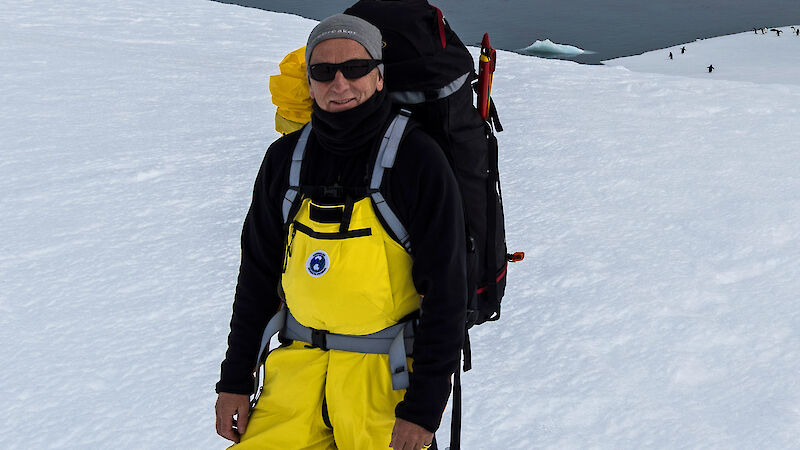As this magazine went to press, entries for the “Name our Icebreaker” competition were flooding in from schools around Australia.
The competition is a unique and exciting opportunity for Australian students in grades 5 to 8 to play a role in Australia’s Antarctic history and to learn more about the Australian Antarctic Program through associated classroom materials aligned with the curriculum.
These students are our future Antarctic scientists, station leaders, or the huge range of occupations that are key to supporting our program. Twelve students from the winning classes in the primary and secondary school sectors will be privileged to a flight down to Wilkins Aerodrome to experience Antarctica first hand. This extraordinary prize is sure to drive a huge amount of interest in our new state-of-the-art icebreaker.
The Australian Antarctic Program is also looking to the future through the development of a heavy-lift aviation capability, in association with the Royal Australian Air Force (RAAF). This past season the RAAF C17-A Globemaster made seven flights in support of the program, including an airdrop of fuel to support deep field science. Traditionally, fuel has been flown into the field using helicopters or ski-equipped aircraft. However, it takes an extended weather window and numerous flights to move the same amount of fuel as delivered by the C17-A in a single mission. Proving this concept is a major capability step for science. A major project to scope out the feasibility of year-round aviation access to Antarctica is also underway, and more details will follow in a future issue of this magazine.
Keeping all our ships and aircraft in motion and ensuring the safety of our Antarctic operations is the job of a team of highly talented people at Head Office and in Antarctica. In this issue we profile some of the people behind these important roles.
On the scientific front, this Antarctic season saw a range of investigations conducted on the Totten and Sørsdal glaciers to better understand ice shelf processes, including the role of surface meltwater in ice-shelf thinning. Glaciologists are now planning next season’s work — and we’ll bring you an update in a future issue.
Whale research was also a feature of the season, with work tagging humpback and minke whales off the Antarctic Peninsula, and acoustic tracking of blue whales as part of the multi-disciplinary Antarctic Circumnavigation Expedition. Both research activities will provide important information to the International Whaling Commission in support of whale science and conservation. In this issue we also look at the success of the International Whaling Commission’s Southern Ocean Research Partnership, which for the past eight years has driven innovative, non-lethal approaches to studying whales.
International collaboration is an inherent part of our work in Antarctica and enshrined in the Antarctic Treaty System. As part of Australia’s obligation under the Comprehensive Nuclear-Test-Ban Treaty, Davis research station will become the site of a monitoring facility for nuclear explosions in the atmosphere. The site will form part of an International Monitoring System, but it will also provide useful data for much broader research applications.
In my view, spreading the word about our Antarctic activities is as important as the work itself. This season we were fortunate to have a prolific and talented wordsmith visit Casey research station as part of the Australian Antarctic Arts Fellowship. Speculative fiction author Sean Williams collected insights and inspiration for a novel about Antarctica and wrote a blog about his adventure. His book, merging alien fiction with the Heroic Age of exploration, will bring Antarctica to a whole new audience, and no doubt collect some new fans along the way.
Finally it is with sadness that we mark the 100th anniversary of the sinking of the Australasian Antarctic Expedition’s ship, the SY Aurora, and the loss of her crew, off the coast of New South Wales. The ship was key to Mawson’s expedition and, as a result, Australia’s reach and influence in Antarctica. One hundred years on we are building a very different ship, to support a new era of Antarctic research and exploration.
Dr Nick Gales
Director, Australian Antarctic Division

